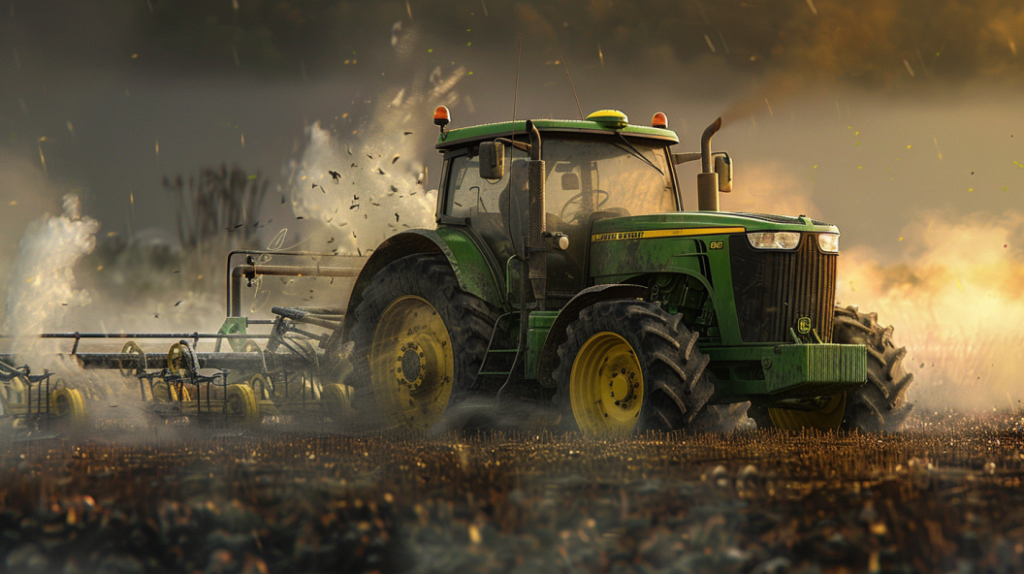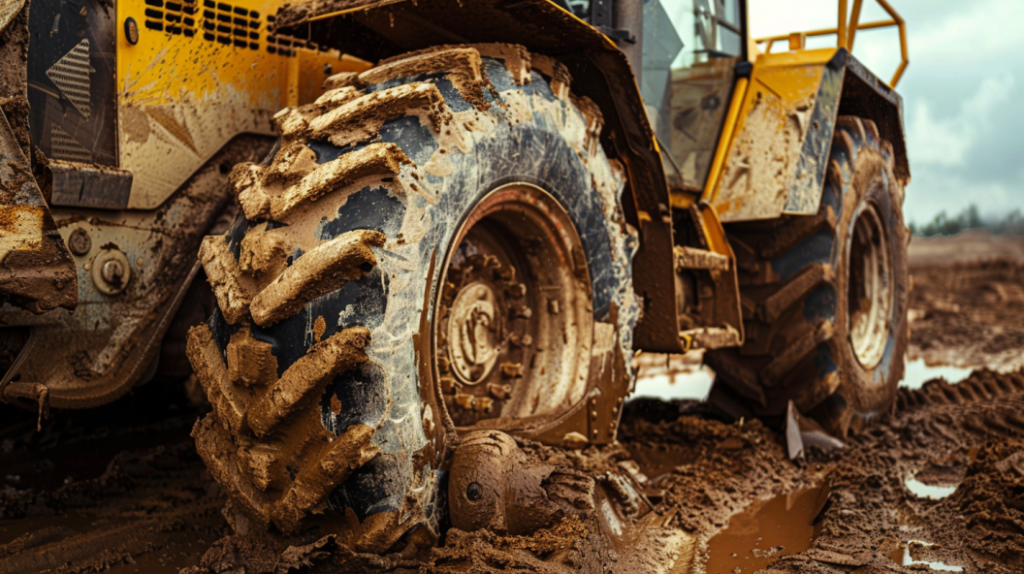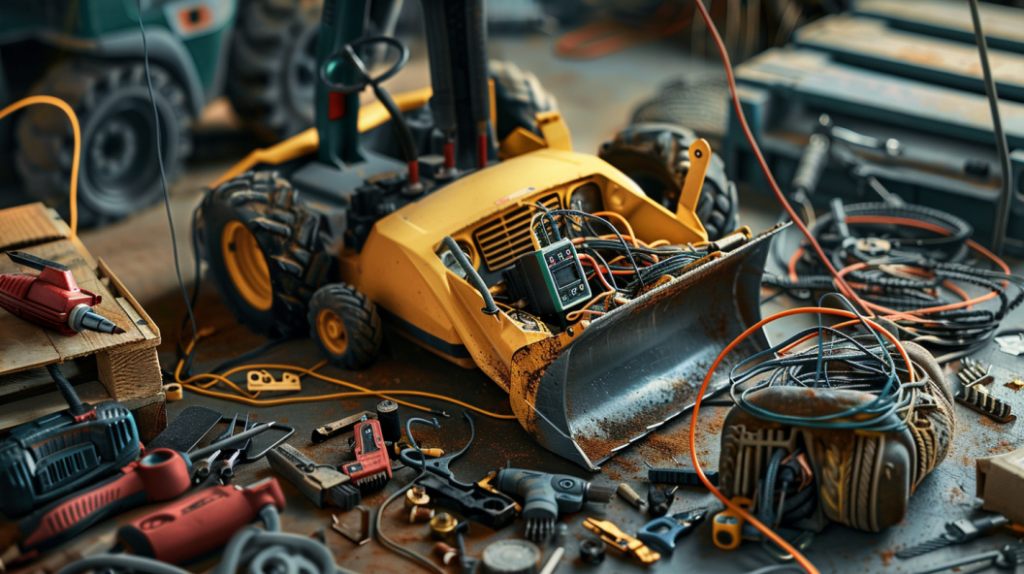If you’ve ever faced the frustration of dealing with John Deere 250 Skid Steer problems, you’re not alone. From hydraulic leaks to engine overheating, these issues can disrupt your workday. But fear not, as understanding common fixes for these challenges can save you time and money in the long run. Let’s explore some practical solutions to keep your skid steer running smoothly and efficiently.
Key Takeaways
- Check hydraulic system for leaks, worn hoses, or low fluid affecting performance.
- Inspect steering system for issues like low fluid levels or worn components.
- Ensure tires are properly inflated and in good condition for stability.
- Examine electrical system for faults in battery, wiring, or components.
- Refer to operator’s manual for model-specific troubleshooting guidance.
Mechanical Problems

If you come across mechanical problems with your John Deere 250 Skid Steer, the most common issues include hydraulic leaks, engine overheating, and drive system malfunctions.
Hydraulic leaks often stem from damaged hoses, seals, or fittings. To address this, inspect all hydraulic components regularly for signs of wear or damage.
Engine overheating can result from issues like a clogged radiator, low coolant levels, or a faulty thermostat. Make sure that the radiator is clean and free of debris and check coolant levels frequently.
Drive system malfunctions may arise due to worn-out drive chains, sprockets, or hydraulic pump problems. Regularly lubricate drive chains and sprockets, and promptly address any hydraulic pump issues to prevent further damage.
Electrical Issues
When encountering electrical issues on your John Deere 250 Skid Steer, common problems may include issues with the battery, wiring, and electrical components.
If you experience issues starting your skid steer, the first component to check is the battery. Confirm it’s fully charged and the terminals are clean and securely connected.
Faulty wiring can lead to various electrical problems. Inspect the wiring harness for any signs of damage, such as fraying or exposed wires, and replace or repair as needed.
Additionally, check the electrical components such as fuses, relays, and switches for any malfunctions. A multimeter can be used to test the continuity and voltage of these parts.
If you encounter electrical issues that persist after checking these common culprits, consulting a professional technician may be necessary to diagnose more complex problems in the electrical system of your John Deere 250 Skid Steer.

Hydraulic System Failures
Inspect the hydraulic system of your John Deere 250 Skid Steer regularly to identify potential failures early on. The hydraulic system is vital for the proper functioning of your skid steer, as it powers essential components like the lift arms and attachments.
Common issues with the hydraulic system can include leaks, reduced performance, and overheating. Leaks in the hydraulic system can be caused by damaged hoses, fittings, or seals. Regularly check for any signs of oil puddles under the skid steer or visible leaks along the hydraulic lines.
Reduced performance, such as slow operation of the lift arms or attachments, can indicate issues with the hydraulic fluid level or quality. Make sure that the hydraulic fluid is at the correct level and that it’s clean and free of contaminants.
Overheating of the hydraulic system can lead to system failures and reduced efficiency. Monitor the temperature gauge and watch out for any abnormal spikes in temperature, which may require checking the cooling system and fluid levels.
Regular maintenance and prompt addressing of any hydraulic system issues can help prevent major failures and keep your John Deere 250 Skid Steer operating smoothly.
User Complaints and Frustrations
Consistently addressing user complaints and frustrations is vital to maintaining the peak performance of your John Deere 250 Skid Steer. One common complaint among users is the difficulty in maneuvering the skid steer, especially in tight spaces or rough terrains. This could be due to issues with the steering system, such as worn-out components or low hydraulic fluid levels.
Users have also reported concerns about the machine’s stability, particularly when lifting heavy loads or operating on uneven ground. This instability could be caused by worn-out tires, a faulty suspension system, or an unbalanced load.
Another frustration users face is the sudden loss of power or acceleration, which may stem from fuel system problems, clogged filters, or issues with the engine. Additionally, users have noted issues with the electrical system, such as malfunctioning gauges, lights, or controls.
Addressing these user complaints promptly and accurately is essential to ensuring the efficient and safe operation of your John Deere 250 Skid Steer.

Troubleshooting Tips and Solutions
To effectively troubleshoot issues with your John Deere 250 Skid Steer, start by examining the steering system for worn-out components or low hydraulic fluid levels. Check the condition of the tires, making sure they’re properly inflated and not damaged. Inspect the hydraulic hoses for leaks or cracks that could be affecting the steering performance. If the skid steer is experiencing jerky movements or difficulty turning, it could indicate a problem with the hydraulic system or the steering controls.
Next, assess the electrical components, such as the battery and wiring, to rule out any issues stemming from power supply. Confirm all connections are secure and free of corrosion. If the skid steer is having trouble starting or experiencing electrical malfunctions, addressing these components could solve the problem.
Lastly, consult the operator’s manual for troubleshooting guidance specific to your John Deere 250 Skid Steer model. Following a systematic approach to problem-solving can help identify and resolve issues efficiently, keeping your skid steer in excellent working condition.
Frequently Asked Questions
Are There Any Specific Maintenance Tasks to Prevent Common Issues?
To prevent common issues with your equipment, perform regular maintenance tasks like:
- Checking fluid levels
- Inspecting hoses for wear
- Cleaning filters
- Greasing moving parts
Keep an eye on tire pressure, inspect attachments for damage, and follow recommended service intervals.
How Does the John Deere 250 Skid Steer Perform in Extreme Weather Conditions?
In extreme weather conditions, the John Deere 250 skid steer maneuvers like a seasoned pilot handling turbulent skies. Its robust design and sturdy components guarantee reliability even in harsh environments.
With proper maintenance and care, this machine proves to be a reliable partner, conquering snow, heat, and rain alike. Its performance in extreme weather is a proof of its engineering excellence and ability to endure challenging conditions with ease.
Can Aftermarket Parts Be Used for Repairs on the Skid Steer?
Yes, aftermarket parts can be used for repairs on the skid steer. However, exercise caution and confirm compatibility to maintain peak performance.
Verify the quality and specifications of the aftermarket parts to avoid potential issues. Check for reputable brands and reviews to make informed decisions.
Utilizing aftermarket parts can be cost-effective, but prioritize quality and compatibility for successful repairs on your skid steer.
What Is the Average Lifespan of a John Deere 250 Skid Steer?
The average lifespan of a John Deere 250 skid steer can vary depending on usage and maintenance. Typically, with proper care and regular servicing, these machines can last upwards of 10,000 hours.
However, harsh operating conditions or neglect can greatly reduce this lifespan. To guarantee longevity, adhere to recommended maintenance schedules, monitor performance indicators, and address any issues promptly to keep your skid steer running smoothly for years to come.
Are There Any Software Updates Available to Improve Performance?
Yes, there are software updates available for the John Deere 250 Skid Steer that can enhance its performance. These updates can address various issues, improve efficiency, and provide new features.
It’s recommended to regularly check for updates on the manufacturer’s website or consult with a certified technician to make sure your skid steer is running at its best. Regularly updating the software can help optimize the machine’s operation and overall performance.
Conclusion
To sum up, addressing common issues with the John Deere 250 Skid Steer requires vigilance and proactive maintenance. By regularly inspecting and maintaining key components like hydraulics, engine, and electrical systems, you can guarantee smooth operation and prevent costly breakdowns.
Remember, a stitch in time saves nine when it comes to troubleshooting and fixing problems with your skid steer. Stay on top of maintenance to keep your equipment running like a well-oiled machine.
Leave a Reply